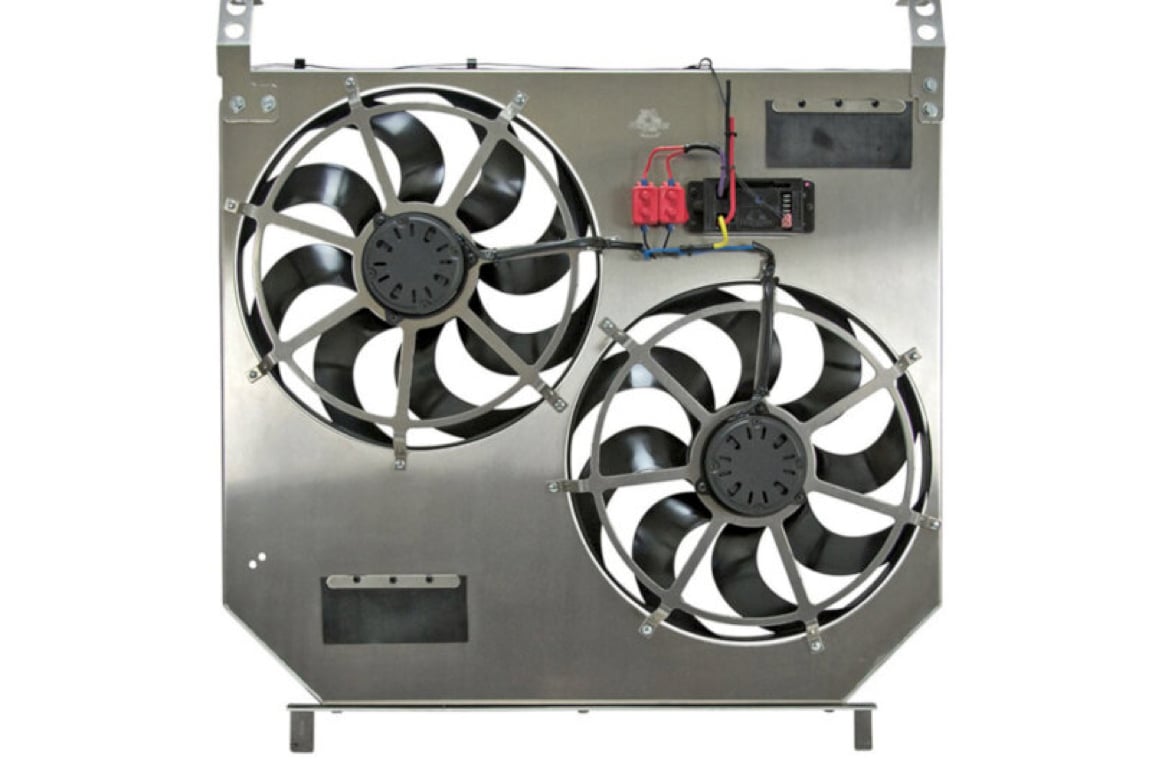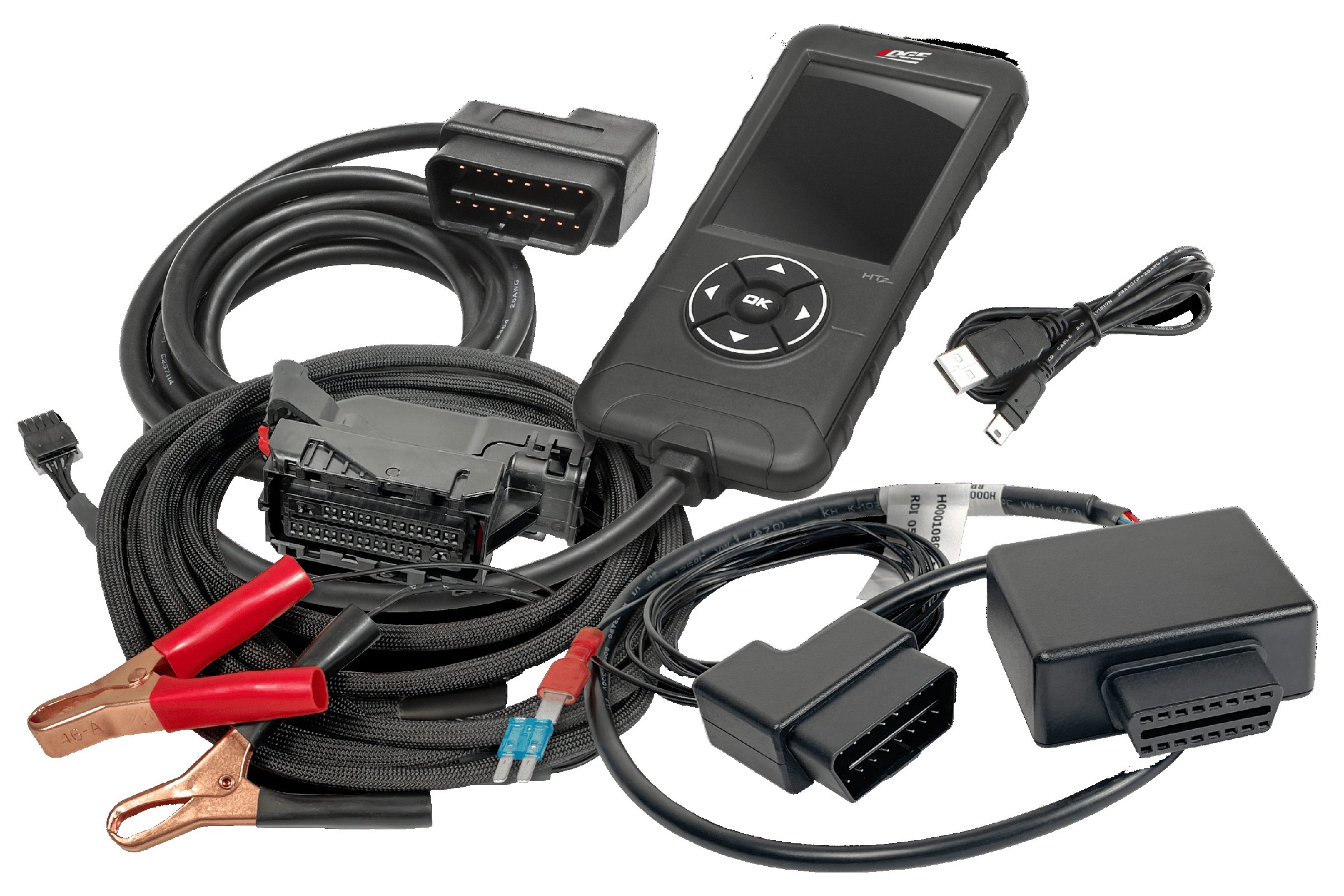While the differences in engine design can be vast, they all have one thing in common — they create heat, and a lot of it. In fact, as much as 65 percent of an engine’s output can be lost to heat. While much of the heat is expelled in exhaust gases, our engines rely on an efficient cooling system to maintain a healthy internal temperature. While many parts of the cooling system are imperative to maintaining temperatures, none of them would be able to combat the heat without the proper amount of airflow through your radiator. To get enough airflow, a debate typically starts about whether an electric or mechanical fan is better, so we did some research on the subject.
Electric Or Mechanical Fan, Does It Matter
When a vehicle is traveling at speed with minimal load, there will likely be enough air passing through the radiator to sufficiently cool the engine. However, when loads increase, speeds decrease, and the ambient temperature rises, the utilization of a fan is imperative for the cooling system to keep your vehicle within normal operating temperatures. The fan(s) responsible for moving air through an automotive radiator are generally powered one of two ways: an engine-driven system, or an electric motor. The engine-driven variety is typically done using a belt that utilizes the rotation of the crankshaft, or a direct-drive system with a solid connection to the water pump — the fan speed is then controlled by a fan clutch, relative to engine RPM.

A direct-fit electric cooling module might look cool under the hood, but if you use your truck for towing and hauling, it’s probably not a wise option.
Electric fans have become more popular in both the OE and aftermarket spaces, and generally for good reason. Most cars now come with a transverse engine. Therefore, they are required to use an electric fan since the rotating assemblies are not front-facing. When removing the reliance of the fan’s function from the engine or its components, there is less parasitic loss which can free some additional power. We have likely all seen some fellow diesel truck enthusiasts who have opted to switch their cooling fan to this electric-driven fan or fans in lieu of the factory fan. There are some mixed opinions on the matter, basically, whether an electric fan will move enough cubic feet per minute of air (CFM), so we decided to consult the pros over at Strictly Diesel.
Is An Electric Or Mechanical Fan The Way To Go
According to Gary Maschner, “In my opinion, when contemplating an electric or mechanical fan, an electric fan might work for someone that lives in a moderate to cool climate, never tows or hauls anything, and is looking for any slight gain in economy/power by getting rid of the fan clutch. I did some quick searching and haven’t found any specs on stock cooling fan CFM in any of the trucks we see.” Gary also mentioned that CFM ratings are different when tested outside versus mounted to a cooling stack.
Strictly Diesel Co-Owner, Dennis Schroeder, also hopped into the conversation by adding, “I agree with Gary. In a cool climate with no towing involved, an electric fan might work great for power or MPG increase. However, anyone ‘working’ the truck is likely to have problems because electric fans simply can’t move the CFM of air a big engine-driven fan will. I have advised against electric [fans] on tow rigs or anyone in warmer climates for years.”
We were also unable to find any concrete data points of CFM ratings of the OE fans for our trucks, though we have seen numbers thrown around online in the neighborhood of about 8,500 CFM, and some are likely well above that. For reference, one of the highest-rated electric setups we could find was a dual fan with a shroud that reportedly can push up to 6,800 CFM.
As Dennis mentioned, there is also a differential when obtaining these stats in a controlled environment, versus being employed in the field. This is a common occurrence with all types, as it is often hard to replicate the conditions and unforeseen challenges in a laboratory or shop that our trucks face when in harsh environments and/or doing hard work.
Gary and Dennis also made mention of certain applications where an electric fan is suitable, and we do not disagree. As they said, you will likely be able to maintain adequate cooling in an environment where the ambient temperate stays very cool. That being said, we often can’t predict where our work or recreational activities will lead us, in which case it may be best to stick with the original fan. The gain in fuel economy is quite minimal, and the gain in horsepower typically pales in comparison to the potential risk of overheating or lack of ability to use the vehicle — except for one.
Fans Of High Performance
One application we can certainly see the value of converting to electric fans is motorsports. If the sole purpose of your truck is to put down the fastest time, then freeing up that extra few horsepower could be well worth the cost and the time. A benefit of electric fans in this environment is that you have the ability to fully control, or at least override the fan’s operation. This can enable you to cut power to the fans for faster warmup times in the pits, and also help with cooling as you can continue to run the fan at full speed with the truck idling, or even turned off. That said, the truck should really only be driven locally, if not towed to the track.
When contemplating an electric or mechanical fan, we found a number of electric cooling fan setups available online, ranging from universal kits which require the installer to create all solutions for mounting, wiring, and the creation of a shroud, to vehicle-specific products which are direct fit and even utilize much of the existing hardware. As with anything, the components and build quality can vary greatly depending on the manufacturer and who is assembling the kits. We were pleasantly surprised to see footnotes on some of the higher-end kits which state that the product is not recommended for towing or hauling due to a lack of CFM.
A different way to possibly benefit from the use of an electric fan is to use them in conjunction with your engine-driven fan. This comes in the form of an auxiliary fan, which can be mounted in front of the cooling system and used to push air through the system. This can be a benefit for both cooling and your air conditioning efficiency when sitting idle on hot days. Electric fans can also be a great addition should you want or need to mount an auxiliary cooler to keep the transmission fluid or engine oil temperature down. The relative size of these fans and a small cooler makes for a number of options for installation, by moving them away from the front of the engine bay.
Choosing Where To Go From Here
As we’ve established, if your truck is ever used for towing, hauling, or is driven in any climate much above freezing, we don’t recommend replacing your original engine-driven fan with the electronic variety. Unless you are rolling down the quarter-mile on a regular basis, the juice just isn’t worth the squeeze, when it comes to the risks associated with inadequately keeping your diesel mill running at the proper temperature. So this may leave you asking yourself what you can do to improve cooling should you need to do so.
First and foremost, make sure everything is in good working order and is fully functioning the way the manufacturer intended. This list could include a good OE fan without cracked or broken blades, and a fan clutch that is functioning properly. We have even heard of truck owners who have wired a toggle switch into the fan wiring which allows them to override the factory settings and fully engage the clutch fan regardless of your speed or engine RPM. This could be beneficial if idling for long periods in a hot and humid environment with the AC on high. You will also want to make sure the components in your cooling system (radiator, hoses, thermostat, and water pump) are functioning correctly, and the system has been regularly flushed with fresh coolant.
Hopefully, this short article about whether an electric or mechanical fan is better will shed some light on a question that seems to frequently pop up in discussions.





